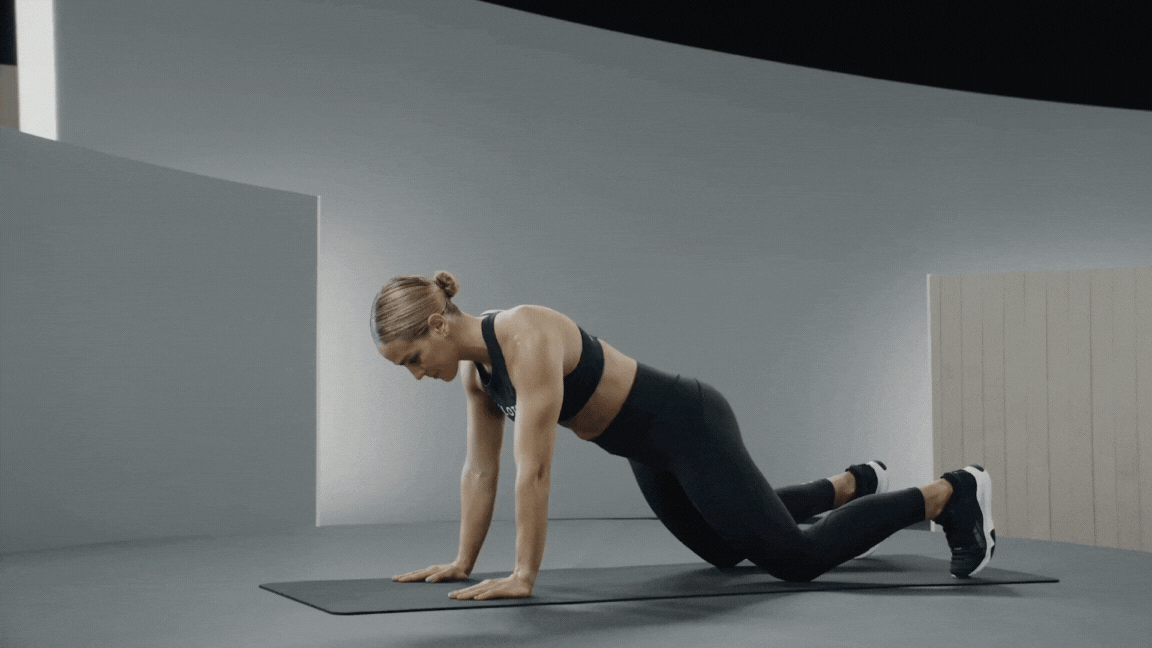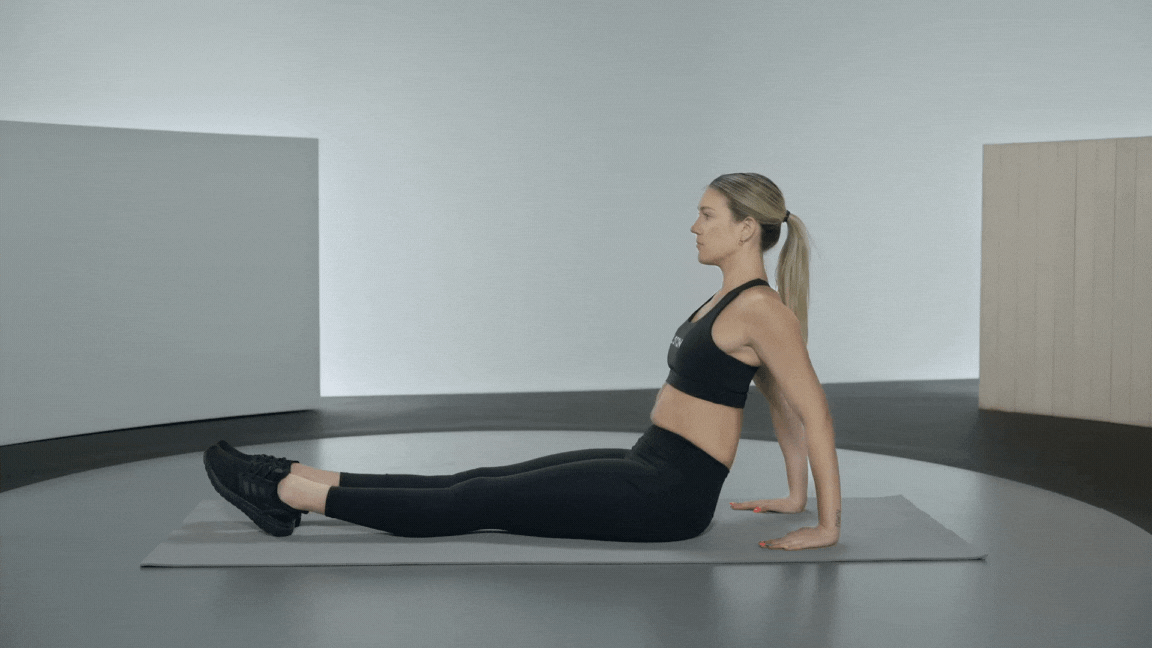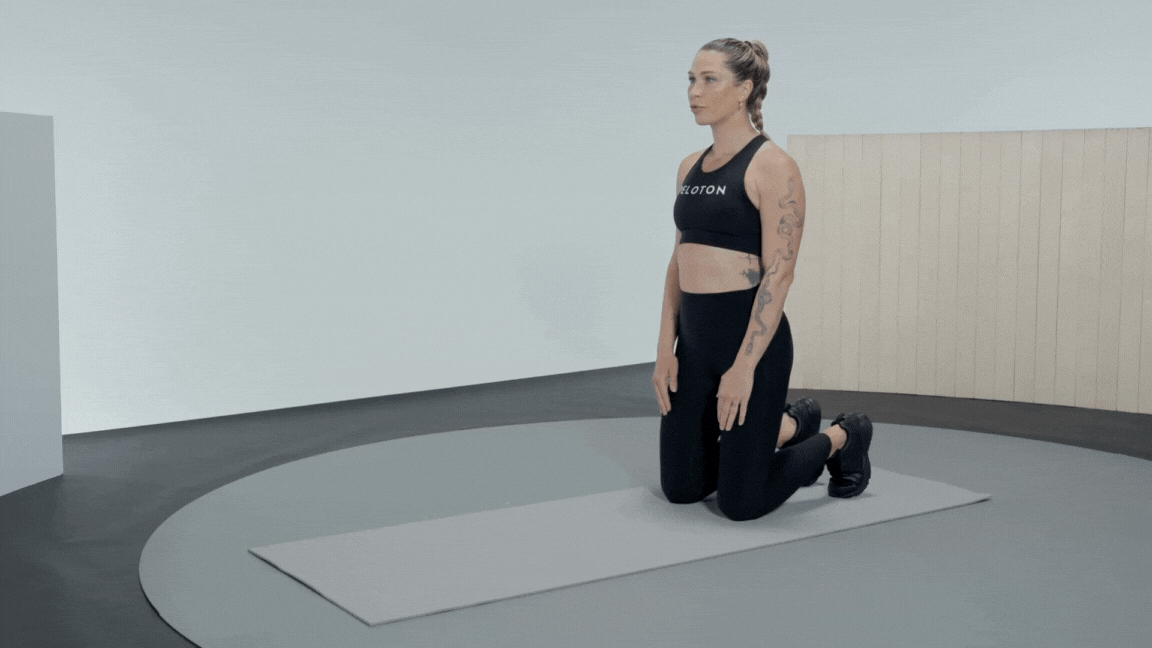
Carol Yepes/Moment via Getty Images
13 Plank Variations to Fire Up Your Core
Getting a little tired of your standard plank? Mix things up with these variations that strengthen every muscle in your core.
By Sarah Klein•
What Muscles Do Planks Work?
Why It's Good to Vary Your Plank Workout
Here Are 13 Plank Variations to Fire Up Your Core
How to Add Planks to Your Workout Routine
A plank is like a plain bowl of oatmeal: You know it’s good for you, but it gets a little boring if you don’t add some flavor. That's where plank variations come in.
Because planks are so beneficial—they improve posture, stability, core strength, and coordination, among other perks—they’re classic additions to plenty of ab workouts. But that means you’ve probably done more planks than you can count. And when a workout routine gets stale, you’re less likely to stick with it, according to the American Council on Exercise (ACE).
With plank variations, you can still get all the core-strengthening benefits but with a little more excitement—just as if you’d mixed in some cinnamon, blueberries, and almond slivers to your morning oats.
If you’ve perfected your forearm or straight-arm plank and you can hold it for a minute (or you can hold a side plank for 40 seconds), you’re ready to take on a new challenge, says Peloton instructor Joslyn Thompson Rule.
Keep reading for everything you need to know about the muscles you can strengthen with different types of planks, how to add plank variations to your workouts, and some of the best options to try.
What Muscles Do Planks Work?
Planks challenge just about every muscle in your core—which includes everything between your chest and pelvis. You’ll feel planks most in your rectus abdominis (your upper abs) and your transverse abdominis (your lower abs), according to the Cleveland Clinic.
Depending on the variation you try, you might also work your glutes, hamstrings, and shoulders.
Why It's Good to Vary Your Plank Workout
Switching things up means you can integrate other movements into your core routine that work those midsection muscles from every angle, Joslyn says. For example, a side plank will challenge your obliques, the muscles along the sides of your torso, more than a standard plank.
Certain variations can also make planks harder (looking at you, plank reach!) or modify the movement for different abilities and fitness levels.
And don’t underestimate the power of a plank variation to keep your workouts from feeling stagnant. Incorporating different variations keeps core work fresh and fun which makes you more likely to stay the course.
Here Are 13 Plank Variations to Fire Up Your Core
There is no one ideal plank variation for everyone. Instead, the hardest or most effective plank out there is going to depend on your goals and experience. “The variation that is most effective is the one that you can do,” Joslyn says. Similarly, “the hardest plank variation is the one that you cannot do.”
Experiment with a few of her favorite ideas below to find the plank variations that feel challenging and fun for you.
1. Incline Plank
Balance on your toes with your forearms or palms planted on a sturdy item like a box, bench, chair, or stair directly underneath your shoulders.
Brace your core and glutes to maintain a straight, inclining line from your heels to hips to head.
Hold for your desired amount of time.
Tip: The higher the object you place your arms on, the easier this plank variation will be.
2. Seesaw Plank
Balance on your toes with your forearms or palms planted on the ground underneath your shoulders.
Brace your core and glutes to maintain a straight line from your heels to hips to head.
Use your abs to rock your entire body forward about two inches, then backward about two inches.
Continue seesawing back and forth for your desired amount of time.
3. Plank Arm Raise
Balance on your toes with your palms planted on the ground underneath your shoulders.
Brace your core and glutes to maintain a straight line from your heels to hips to head.
Without allowing much movement in your hips, lift your right hand off the floor and extend your right arm out in front of you.
Return your right hand to the floor and repeat on your left side.
Continue alternating arm raises for your desired amount of time.
Tip: You can also perform a plank arm raise on your knees if you need a more stable base, Joslyn says.

4. Plank Shoulder Tap
Balance on your toes with your palms planted on the ground underneath your shoulders.
Brace your core and glutes to maintain a straight line from your heels to hips to head.
Without allowing much movement in your hips, lift your right hand off the floor and tap it to your left shoulder.
Return your right hand to the floor.
Lift your left hand off the floor and tap it to your right shoulder.
Return your left hand to the floor.
Continue alternating shoulder taps for your desired amount of time.
Tip: You can also perform a plank shoulder tap from your knees if that’s more accessible for you, Joslyn says.
5. Plank Hip Dip
Start in a forearm plank, balancing on your toes, with your elbows planted on the ground underneath your shoulders.
Brace your core and glutes to maintain a straight line from your heels to hips to head.
With control, twist your hips and legs to the left. Gently tap your left hip to the floor.
Twist your hips and legs to the right, tapping your right hip to the floor.
Continue alternating hip dips for your desired amount of time.

6. Reverse Plank
Sit on the floor with your legs extended and your palms planted on the ground behind you with your fingers pointing forward.
Brace your core and glutes and press into your palms to lift your hips off the ground until your body forms a straight line from your heels to hips to head.
Hold for your desired amount of time.
7. Side Plank Rotation
Lie on your right side with your left foot stacked on top of your right foot.
Brace your core and glutes and press up into a side plank, balancing on the outside of your right foot and your right palm or forearm. Extend your left arm toward the ceiling.
Thread your left hand under your torso as you twist to the right, then extend it back up toward the ceiling.
Continue to rotate like this for your desired amount of time.
Repeat on the other side for the same amount of time.

8. Plank March
Start in a plank; balance on your toes with your palms planted on the ground underneath your shoulders.
Brace your core and glutes to maintain a straight line from your heels to hips to head.
Without allowing much movement in your hips, lift your right foot a few inches off the floor.
Return your right foot to the floor.
Lift your left foot a few inches off the floor.
Return your left foot to the floor.
Continue marching for your desired amount of time.
9. Decline Plank
Balance on your toes with your feet on top of a sturdy item like a box, bench, chair, or stair and your palms on the floor directly underneath your shoulders.
Brace your core and glutes to maintain a straight, declining line from your heels to hips to head.
Hold for your desired amount of time.
Tip: The higher the object you place your feet on, the harder this plank variation will be.
10. Plank Reach
Start in a forearm plank, balancing on your toes with your elbows planted on the ground underneath your shoulders.
Brace your core and glutes to maintain a straight line from your heels to hips to head.
Lift your left forearm and reach your left hand as far as you can out in front of you.
Return your left forearm to the floor.
Lift your right forearm and reach your right hand as far as you can out in front of you.
Return your right forearm to the floor.
Continue alternating sides for your desired amount of time.
11. Plank With Knee to Elbow
Balance on your toes with your palms planted on the ground underneath your shoulders.
Brace your core and glutes to maintain a straight line from your heels to hips to head.
Without allowing much movement in your hips, bring your right knee as close as you can to your right elbow.
Return your right foot to the floor.
Bring your left knee toward your left elbow.
Return your left foot to the floor.
Continue alternating sides for your desired amount of time.
12. Plank Up Down
Start in a forearm plank, balancing on your toes with your elbows planted on the ground underneath your shoulders.
Brace your core and glutes to maintain a straight line from your heels to hips to head.
Press through your right forearm to come up onto your right hand.
Press through your left forearm to come up onto your left hand.
Return down to your right forearm.
Return down to your left forearm.
Repeat, starting with the left hand this time. Continue alternating up downs for your desired amount of time.

13. Plank Jack
Balance on your toes with your forearms or palms planted on the ground underneath your shoulders.
Brace your core and glutes to maintain a straight line from your heels to hips to head.
Jump your feet out wide in jumping jack position, then jump them back to center.
Continue jacking for your desired amount of time.
Tip: If the jump is too challenging for you, step one foot at a time out to the side, then bring it back to the center, before repeating on the other side. Continue alternating for your desired amount of time.
How to Add Planks to Your Workout Routine
You can add planks (or any of your favorite plank variations) to any core routine, or even try them every day if you want to stay consistent with a “snack” daily ab work. “As an exercise, they are not too fatiguing on the body, so it’s absolutely fine to plank daily,” Joslyn says. “In saying that, it is not a requirement to do daily: Two to four times per week is also great!”
Build up to being able to hold a traditional forearm or straight-arm plank for one minute and a side plank for 30 to 40 seconds. Start with anywhere from 10 to 30 seconds when you’re trying a new plank variation.

Peloton App
Access thousands of classes with no equipment needed.
This content is for informational and educational purposes only and does not constitute individualized advice. It is not intended to replace professional medical evaluation, diagnosis, or treatment. Seek the advice of your physician for questions you may have regarding your health or a medical condition. If you are having a medical emergency, call your physician or 911 immediately.
Level up your inbox.
Subscribe for a weekly dose of fitness, plus the latest promos, launches, and events.
By providing your email address, you agree to receive marketing communications from Peloton.
For more about how we use your information, see our Privacy Policy.





